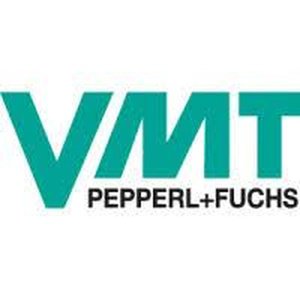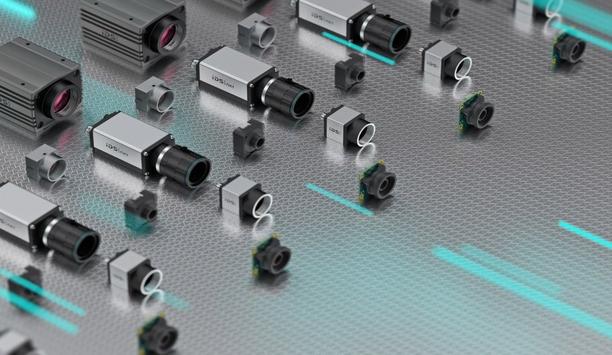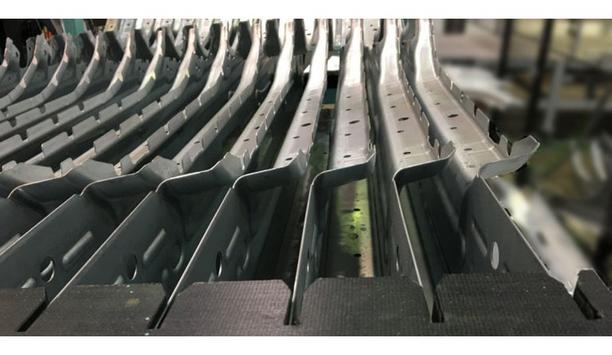VMT Vision Machine Technic Bildverarbeitungssysteme GmbH - Experts & Thought Leaders
Latest VMT Vision Machine Technic Bildverarbeitungssysteme GmbH news & announcements
There is no way around automation if companies want to stand their ground in the face of a shortage of skilled workers, tight margins, and ever-shorter time-to-market. In this context, cameras are indispensable. IDS is one of the market pioneers in the field of industrial image processing. InsightImaging The company is hosting the online event "InsightImaging" on 21 November. Participants can look forward to versatile product presentations, case studies, and "How To" sessions. In just one afternoon, they will learn everything they need to know about the latest image processing developments in 2D, 3D, and AI and will be empowered to put their new knowledge into practice. Attendance is free, takes place remotely via a computer screen, and requires registration via the website. InsightImaging takes a close look at new developments Multifaceted programme "Cameras make many processes more efficient. However, companies need to know their options to benefit accordingly," explains Patrick Schick, Product Marketing Manager at IDS. To this end, the company has put together a multifaceted programme for InsightImaging. This includes keynote speeches, Q&As and examples of the practical use of cameras from partners such as VMT Vision Machine Technic Bildverarbeitungssysteme GmbH. Ensenso C, IDS NXT malibu Ensenso C, which is the first camera in the Ensenso product line to deliver both 3D point clouds and 2D colour images The focus will also be on product innovations such as Ensenso C, which is the first camera in the Ensenso product line to deliver both 3D point clouds and 2D colour images. Another highlight is the intelligent camera IDS NXT malibu. It has a special chip that not only offers excellent image quality but for the first time also enables live streaming via RTSP and AI-based evaluations in the live image by means of an industrial camera. Exclusive on 21.11.: Innovations, hands-on sessions, expert input Intelligent image evaluation with AI DENKweit, a Fraunhofer spin-off, will also be attending the event. Arvid Moritz, Head of Business Development at DENKweit, summarises, "With DENKnet, we want to perfect intelligent image evaluation for industrial applications." He adds, "At the same time, we emphasise simplicity of use. In our session, we not only provide insights into the DENK VISION AI Hub but also introduce specific application possibilities." The combination of DENKnet image processing and industrial cameras from IDS allows particularly powerful, AI-based applications to be realised. Practical relevance "How To" sessions to impart knowledge by the Machine Vision Consulting Team During the entire event, practical relevance is a key factor. The supporting programme therefore includes helpful "How To" sessions to impart knowledge by the Machine Vision Consulting Team from IDS. Overview: Suitable for: anyone who wants to know about new developments in the camera market. Event: 21 November from 13:30, online via Zoom Registration closing date: 15 November
Robots do monotonous workflows and less pleasant, repetitive tasks with brilliance. Combined with image processing, they become “seeing” and reliable supporters of humans. They are used in quality assurance to check components, help with the assembly and positioning of components, detect errors and deviations in production processes and thus increase the efficiency of entire production lines. An automobile manufacturer is taking advantage of this to improve the cycle time of its press lines. Together with the latter, VMT Vision Machine Technic Bildverarbeitungssysteme GmbH from Mannheim developed the robot-based 3D measuring system FrameSense for the fully automatic loading and unloading of containers. Pressed parts are thus safely and precisely inserted into or removed from containers. Four Ensenso 3D cameras from IDS Imaging Development Systems GmbH provide the basic data and thus the platform for process automation. Application The actual workflow that FrameSense is designed to automate is part of many manufacturing operations. A component comes out of a machine-here a press- and runs on a conveyor belt to a container. There it is stacked. As soon as the container is full, it is transported to the next production step, e.g., assembly into a vehicle. All these tasks are now to be taken over by a robot with a vision system-a technological challenge Up to now, employees have been responsible for loading the containers. This actually simple subtask is more complex than one might think at first glance. In addition to the actual insertion process, the first step is to determine the appropriate free space for the part. At the same time, any interfering factors, such as interlocks, must be removed and a general check of the “load box” for any defects must be carried out. All these tasks are now to be taken over by a robot with a vision system-a technological challenge. This is because the containers also come from different manufacturers, are of different types, and thus vary in some cases in their dimensions. Positioning of the components For their fully automatic loading and unloading, the position of several relevant features of the containers must be determined for a so-called multi-vector correction of the robot. The basis is a type, shape and position check of the respective container. This is the only way to ensure process-reliable and collision-free path guidance of the loading robot. All this has to be integrated into the existing production process. Time delays must be eliminated and the positioning of the components must be accurate to the millimetre. 3D point cloud These point clouds of all four sensors are combined for the subsequent evaluation To counter this, VMT uses four 3D cameras per system. The four sensors each record a part of the entire image field. This can consist of two containers, each measuring approximately 1.5 × 2 × 1.5 metres (D × W × H). Two of the cameras focus on one container. This results in data from two perspectives each for a higher information quality of the 3D point cloud. These point clouds of all four sensors are combined for the subsequent evaluation. In the process, registrations of relevant features of the container take place in Regions of Interest (ROIs) of the total point cloud. Interference contours Registration is the exact positioning of a feature using a model in all six degrees of freedom. In other ROIs, interference contours are searched for which could lead to collisions during loading. Finally, the overall picture is compared with a stored reference model. In this way, the containers can be simultaneously checked for their condition and position in a fully automated manner. Even deformed or slanted containers can be processed. All this information is also recorded for use in a quality management system where the condition of all containers can be traced. The calibration as well as the consolidation of the measurement data and their subsequent evaluation are carried out in a separate IPC (industrial computer) with screen visualisation, operating elements and connection to the respective robot control. Image processing solution The entire image processing takes place in the image processing software MSS developed by VMT The main result of the image processing solution is the multi-vector correction. In this way, the robot is adjusted to be able to insert the component at the next possible, suitable deposit position. Secondary results are error messages due to interfering edges or objects in the container that would prevent filling. Damaged containers that are in a generally poor condition can be detected and sorted out with the help of the data. The entire image processing takes place in the image processing software Multi-Sensor Systems (MSS) developed by VMT. FrameSense is designed to be easy to use and can also be converted to other components directly on site. Robust 3D camera system On the camera side, VMT relies on Ensenso 3D cameras-initially on the X36 model. The current expansion stage of FrameSense is equipped with the Ensenso C variant. The reasons for the change are mainly the better projector performance-thanks to a new projection process-as well as a higher recording speed. In addition, the Ensenso C enables a larger measuring volume. This is an important criterion for FrameSense, because the robot can only reach the containers to be filled up to a certain distance. The specifications of the Ensenso C thus correspond exactly to VMT's requirements, as project manager and technology manager Andreas Redekop explains: "High projector performance and resolution together with fast data processing were our main technical criteria when selecting the camera. The installation in a fixed housing was also an advantage.” Ensenso models Housing of a robust 3D camera system meets the requirements of protection class IP65/67 The Ensenso C addresses current challenges in the automation and robotics industry. Compared to other Ensenso models, it provides both 3D and RGB colour information. Customers thus benefit from even more meaningful image data. The housing of the robust 3D camera system meets the requirements of protection class IP65/67. It offers a resolution of 5 MP and is available with baselines from current to approx. 455 mm. This means that even large objects can be reliably detected. The camera is quick and easy to use and addresses primarily large-volume applications, e.g., in medical technology, logistics or factory automation. Outlook By automatically loading and unloading containers and the integrated 3D container inspection, manual workstations can be automated with the help of FrameSense. Against the background of the shortage of skilled workers, the system can thus make an important contribution to process automation in the automotive industry, among others. It meets the prevailing challenges of the industry. Ensenso C provides the crucial basis for data generation and exceeds the requirements of many applications. Lukas Neumann from Product Management sees their added value especially here: “The high projector power and large sensor resolutions are particularly advantageous in the field of intralogistics. Here, high-precision components have to be gripped from a great distance with a large measuring volume.” For other stacking or bin-picking applications in classic logistics, he could imagine a similar camera with high projector power but lower resolution and fast recording. So nothing stands in the way of further developments and automation solutions in conjunction with "seeing" robots.
Maximising security and performance
DownloadVerkada workplace safety survey
DownloadAccess control system planning phase 2
DownloadGuide for HAAS: New choice of SMB security system
DownloadSecurity practices for hotels
Download








